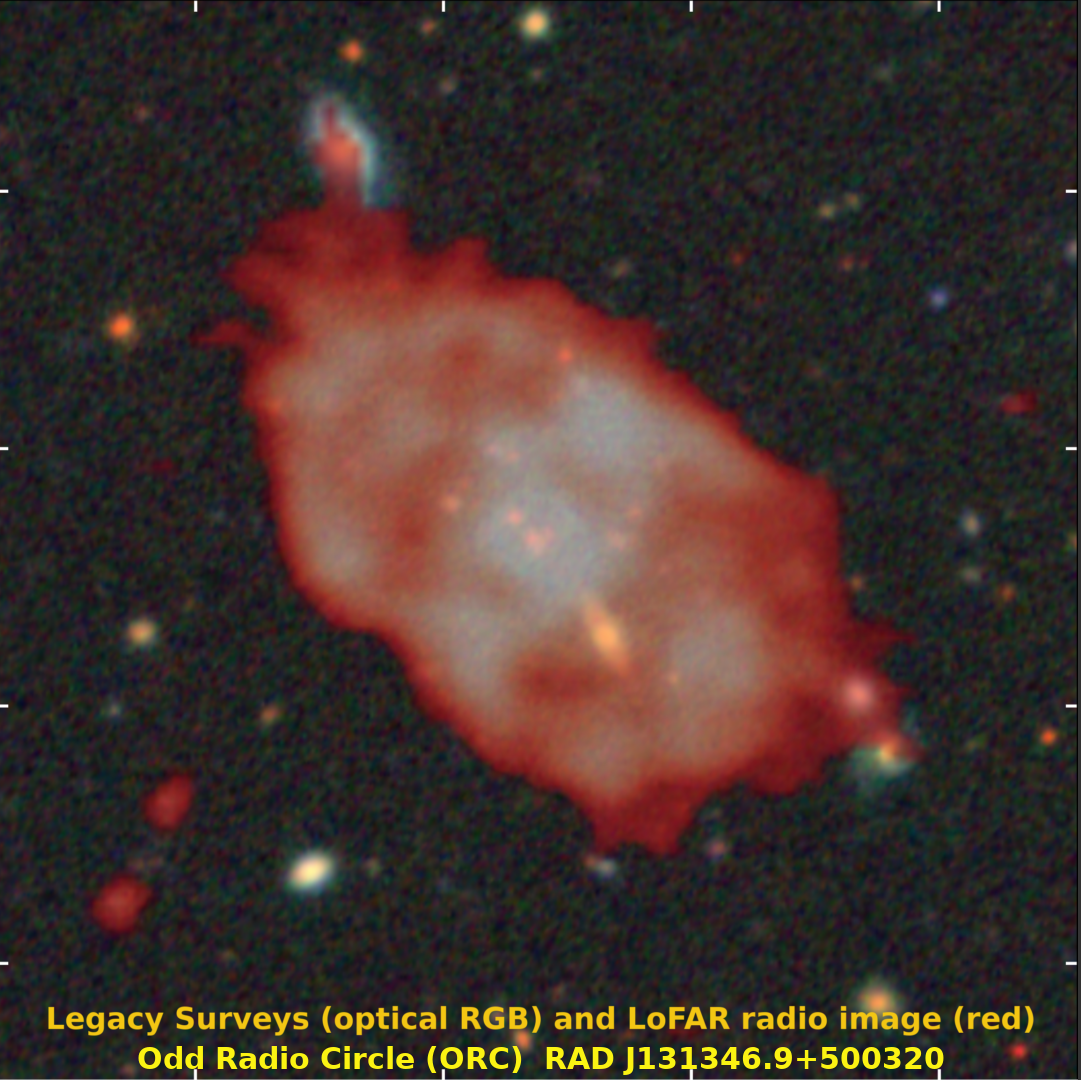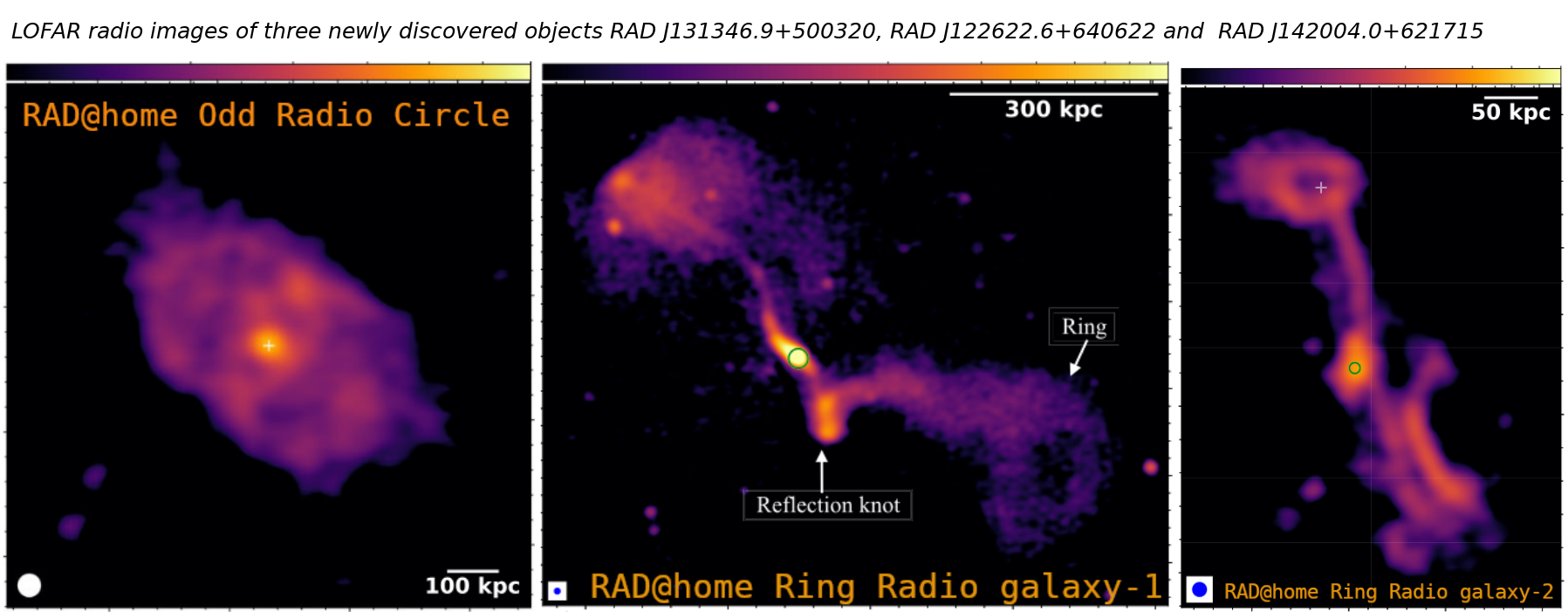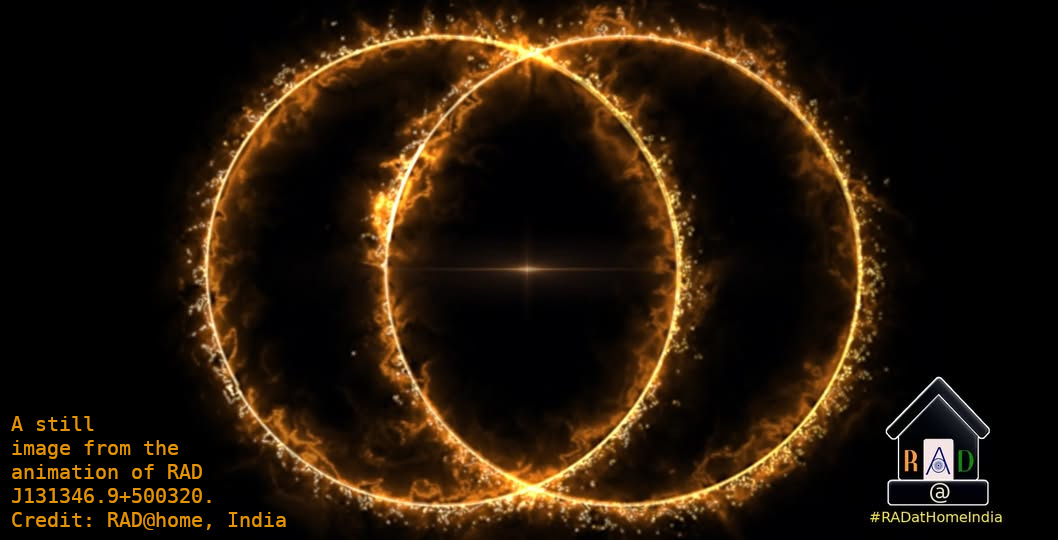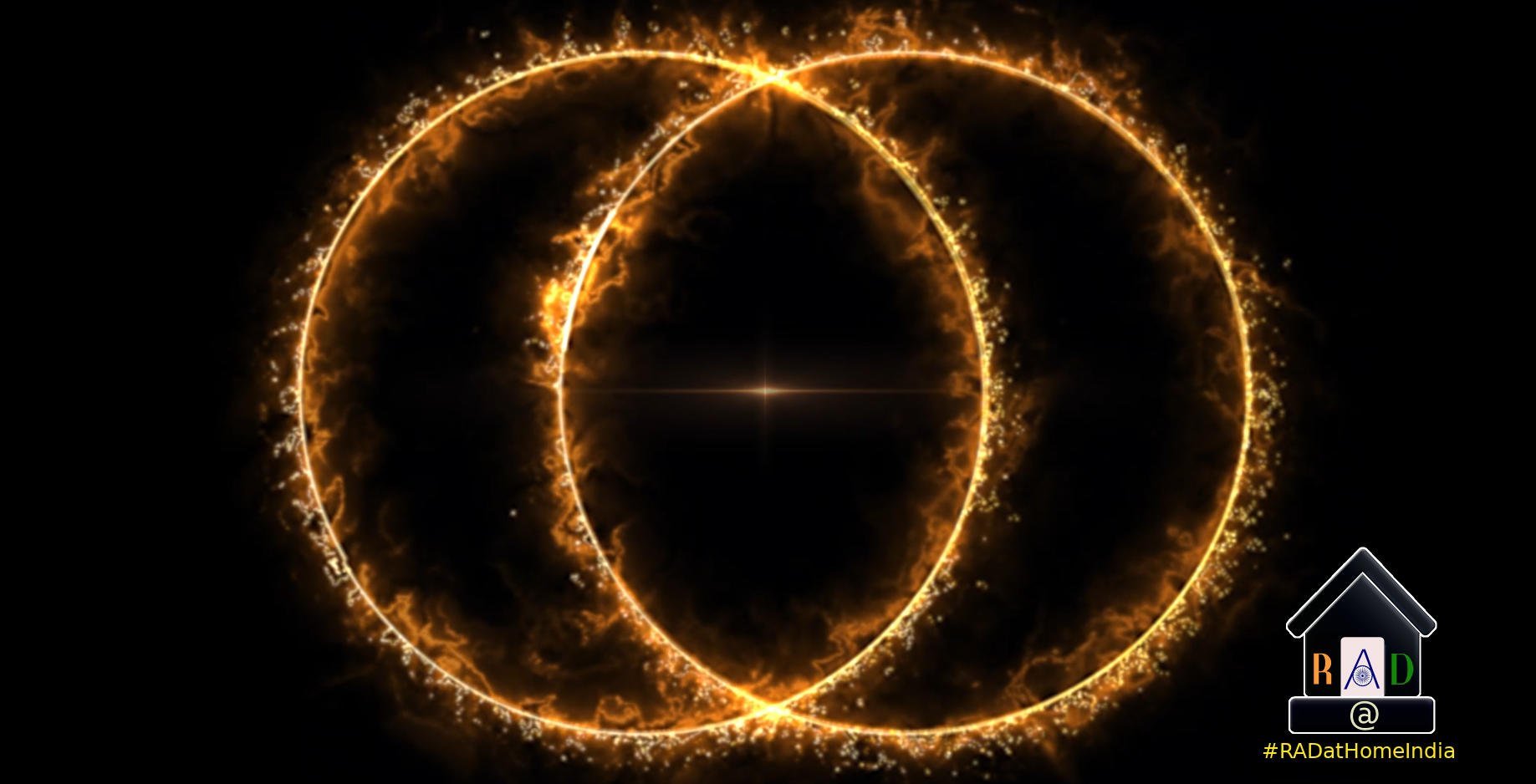The most distant and most powerful ‘odd radio circle’ (ORC) known so far has been discovered by astronomers.
These curious rings are a relatively new astronomical phenomenon, having been detected for the first time just six years ago. Only a handful of confirmed examples are known so far. They typically are 10-20 times the size of our Milky Way galaxy.

ORCs are enormous, faint, ring-shaped structures of radio emission surrounding galaxies which are visible only in the radio band of the electromagnetic spectrum and consist of relativistic, magnetised plasma. Previous research has suggested they might be caused by shockwaves from merging supermassive black holes or galaxies.
Now, a new study published today in Monthly Notices of the Royal Astronomical Society proposes that the rings of light may actually be linked to superwind outflows from spiral host radio galaxies.
Researchers led by the University of Mumbai made their discovery with the help of RAD@home citizen science and the Low-Frequency Array (LOFAR), the world’s largest and most sensitive radio telescope operating at low frequencies (10 to 240 megahertz). #RADatHomeIndia #CitizenScience
The source, designated RAD J131346.9+500320, lies nearly at redshift ~0.94 (when the universe was half its current age), making it both the most distant and the most powerful ORC known to date. It also has not one but two intersecting rings – only the second such example with this feature – sparking more questions than answers.
Dr Ananda Hota, founder of the RAD@home Astronomy Collaboratory for citizen science research said: “This work shows how professional astronomers and citizen scientists together can push the boundaries of scientific discovery.
“ORCs are among the most bizarre and beautiful cosmic structures we’ve ever seen – and they may hold vital clues about how galaxies and black holes co-evolve, hand-in-hand.”
RAD J131346.9+500320 is the first ORC discovered through citizen science and the first identified with the help of LOFAR.
LOFAR is a cutting-edge pan-European radio telescope, with hundreds of thousands of simple antennas spread across the Netherlands and partner stations in many European countries. Working together as one giant interferometer, it provides an exceptionally sharp and sensitive view of the sky at low radio frequencies. It enables astronomers to look back billions of years to a time before the first stars and galaxies formed and survey vast areas of the low-frequency radio sky.
Alongside this discovery, the RAD@home Collaboratory also found two other unusual cosmic giants with radio rings.

The first, RAD J122622.6+640622, is a galaxy nearly three million light-years across – more than 30 times the size of our Milky Way. One of its powerful jets suddenly bends sideways, as if forced off course, and then blows a spectacular radio ring about 300,000 light-years wide.
The second, RAD J142004.0+621715, stretches across 1.4 million light-years and shows a similar ring of radio emission at the end of one of its jets, with another narrow radio jet on the other side of the host galaxy.
Both galaxies sit in crowded regions of space called galaxy clusters, where their jets likely interact with surrounding matter, million degree hot thermal plasma, which shapes these striking cosmic structures.
All three objects are found in galaxy clusters weighing about 100 trillion Suns, suggesting that interactions of relativistic magnetised plasma jets with the surrounding hot thermal plasma may help shape these rare rings.
Co-author Dr Pratik Dabhade, of the Astrophysics division of National Centre for Nuclear Research, in Warsaw, Poland, said: “These discoveries show that ORCs and radio rings are not isolated curiosities – they are part of a broader family of exotic plasma structures shaped by black hole jets, winds, and their environments.
“The fact that citizen scientists uncovered them highlights the continued importance of human pattern recognition, even in the age of machine learning.”
"When I presented this unusual double-ring structure in a radio galaxy to my research guide (Dr Ananda Hota), he immediately compared it to supernova 1987A, and realised it as a rare ORC. Contributing to RAD@home citizen science has been a great journey, exceeding all expectations and opening my eyes to the hidden patterns of the cosmos through multi-wavelength astronomy." said Mr. Prasun Machado, citizen scientist with the RAD@home Collaboratory.
With upcoming facilities such as the Square Kilometre Array (SKA), astronomers expect many more ORCs to be uncovered.
At the same time, new optical surveys such as the Dark Energy Spectroscopic Instrument (DESI) and the Vera C. Rubin Observatory’s Large Synoptic Survey Telescope (LSST) will provide the redshifts and environments of their host galaxies, helping to piece together how these mysterious rings form and evolve.
For now, these three new cosmic rings – discovered not by automated software but by sharp-eyed citizen scientists – represent an important step toward unlocking the secrets of these vast, puzzling structures.
Link to the MNRAS research paper: https://doi.org/10.1093/mnras/staf1531
Associated Youtube Link for Animation https://youtu.be/OwK2n0aR1pQ
Associated Google Slide for additional text and images https://docs.google.com/presentation/d/1poJrHmAx-cMWNyoHYSq0TSORUXqOUSO0VRiaI_kmv9U/
Associated Press Release from the Royal Astronomical Society (UK) at https://ras.ac.uk/news-and-press/research-highlights/most-powerful-odd-radio-circle-date-discovered
Associated Press Release from the Centre for Nuclear Research (Warsaw, Poland) at https://www.ncbj.gov.pl/aktualnosci/astrofizyk-ncbj-jednym-z-odkrywcow-najwiekszego-nietypowego-kregu-radiowego
Contact: radathomeindia [at] gmail dot com (2nd October 2025)
P.S. The double ring image shown below is a still from an artistic animation created by Mr Hemant Baghela & Dr Ananda Hota of RAD@home India.

